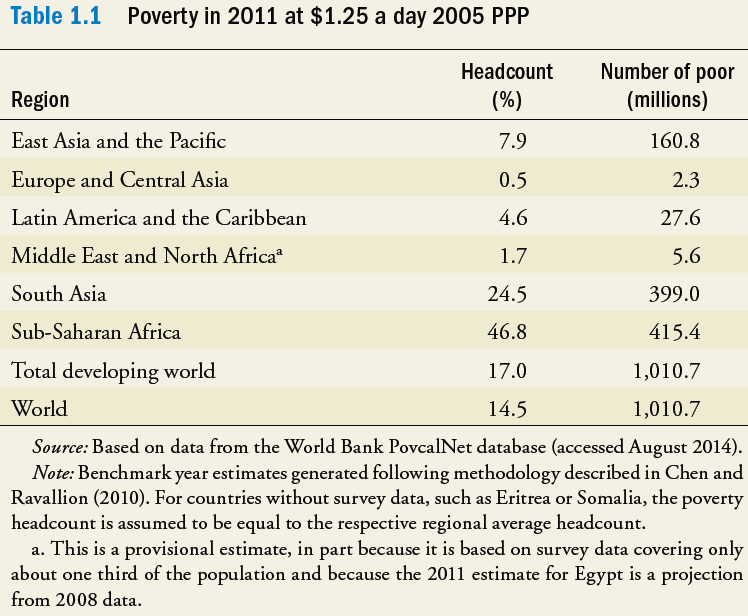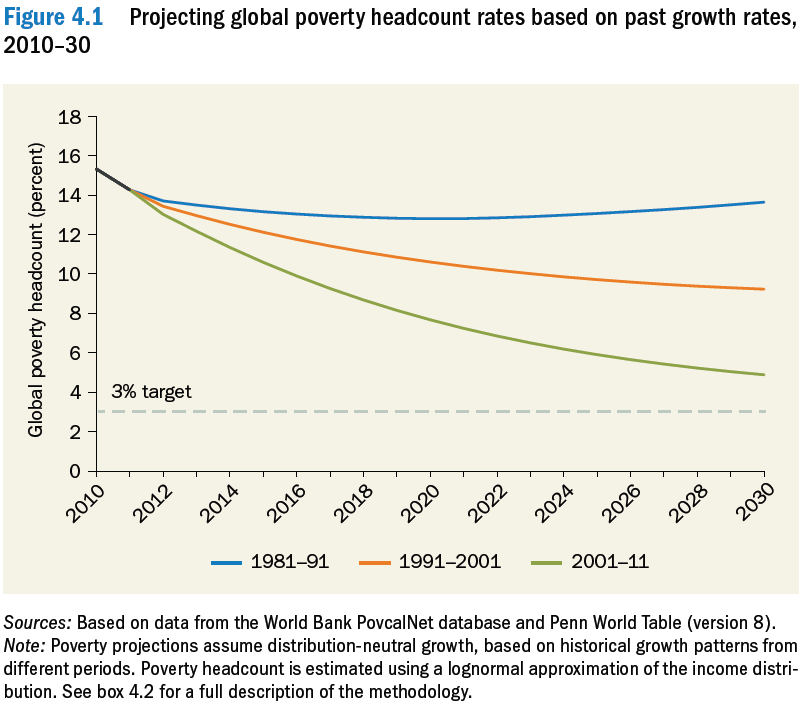A rocky path to shared prosperity
In April last year, the World Bank fundamentally changed its approach to alleviating global poverty. For the first time, it committed to a specific target for poverty reduction, seeking to reduce the share of people living in extreme poverty to 3 per cent of the global population by 2030.
That goal, combined with their desire to boost shared prosperity (defined by the World Bank as increasing the average incomes of the bottom 40 per cent of the population in each country), ensures that the focus is not confined merely to alleviating poverty but also to address rising inequality.
A new report by the World Bank focuses on these developments and the challenge of measuring and monitoring changes in poverty at a global level. Those challenges are many and varied.
Global poverty has improved significantly over the past few decades. Between 1990 and 2011, “the number of people living in extreme poverty has halved, to around one billion people, or 14.5 percent of the world's population”.

Extreme poverty, according to the World Bank, is measured according to the international poverty line of $1.25 a day (in 2005 prices). The poverty line is naturally somewhat arbitrary, but it does correspond with the average national poverty line of the 15 poorest developing countries.
Much of the gain since 1990 has been a result of remarkably strong growth in both China and India, which between them are home to around one third of the global population. That these two countries (particularly China) have seen such a marked reduction in poverty is arguably the greatest economic achievement of the last century.
So why doesn't the World Bank seek to eliminate poverty entirely? Why settle at a 3 per cent target?
According to the World Bank, “poverty in some countries remains deep and widespread, and it is simply not realistic to expect to be able to eliminate poverty in these countries by 2030”. There is also the fact that at any given time, there are people transitioning into and out of poverty, often temporarily. Much as we cannot eliminate unemployment, we cannot entirely eliminate poverty.
The analysis by the World Bank makes it clear that ‘business as usual' will not be sufficient to meet its 2030 goal. If developing countries grow at their 20-year average growth rate, global poverty will remain at around 6.8 per cent by 2030. In fact, the level of global poverty is extremely sensitive to the underlying growth assumption.

But while significant progress has been made to reduce absolute poverty, there is mounting concern in many middle and high-income countries that “the relatively poor are being left behind”. Discussing inequality in exceptionally wealthy countries such as Australia can sometimes be viewed as a ‘first world' problem but the concerns are very real and have shaped recent economic debates in a number of developed countries.
United States President Barack Obama recently declared inequality as “the defining challenge of our time”. But the issue has largely been ignored by Australian policymakers; our most recent federal budget took significant steps towards exacerbating the issue.
Creating a sense of shared prosperity ensures that the poor in developed countries, who are often not poor enough to feature in global estimates of poverty, are not ignored. It's important to remember that poverty exists not only in an absolute sense but also a relative one. The poor might earn a lot more in Australia than they do China, but both groups can be considered disadvantaged.
A final point worth emphasising is that the World Bank seeks to achieve these goals in an environmentally, socially and economically sustainable manner. Economic growth is obviously at the centre of poverty reduction but it cannot come at the expense of our long-term sustainability or broader measures of well-being. In other words, the World Bank seeks a permanent rather than temporary reduction in global poverty.
Unfortunately, measuring and monitoring progress on these goals will prove difficult. Survey heterogeneity between countries and data limitations within poorer countries will make the task inherently tricky. These problems have ensured that, in the past, poverty has been assessed on an infrequent basis.
Some readers will view the World Bank's efforts as misplaced or a waste of resources. How much money and time has been dedicated towards the problem already? But China and India provide a remarkable example of what can be achieved by a generation or two of strong growth.
Finally, alleviating poverty could prove transformative for the global economy, in the same way that the burgeoning middle class in China fundamentally changed manufacturing and the demand for commodities. The desire to eradicate poverty need not be altruistic: its achievement will provide no shortage of new markets and opportunities for savvy businesses, which will hopefully go some way to ensuring that the World Bank makes good on their ambitious agenda.
















